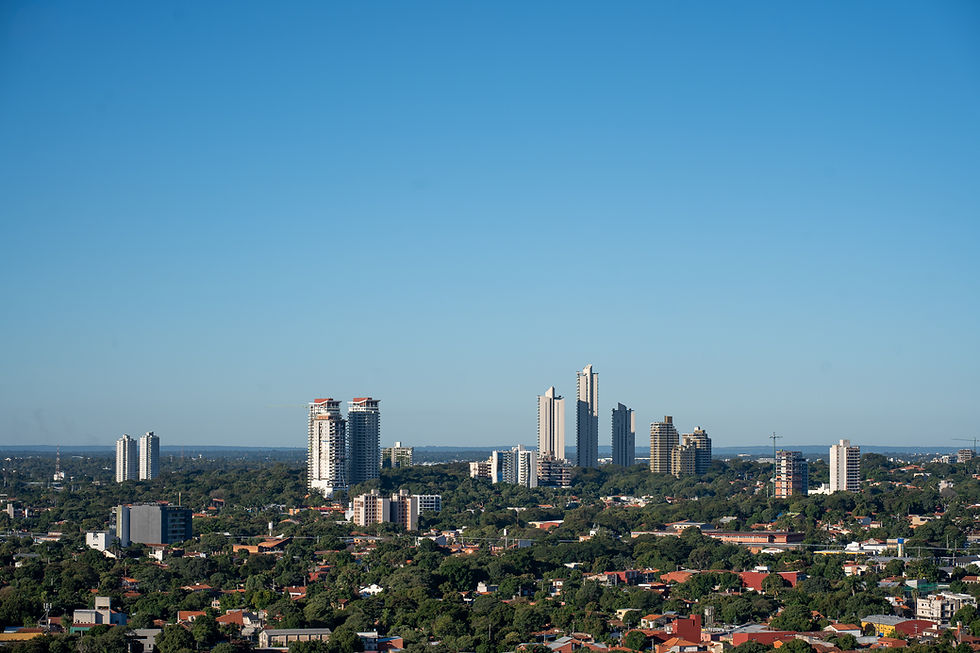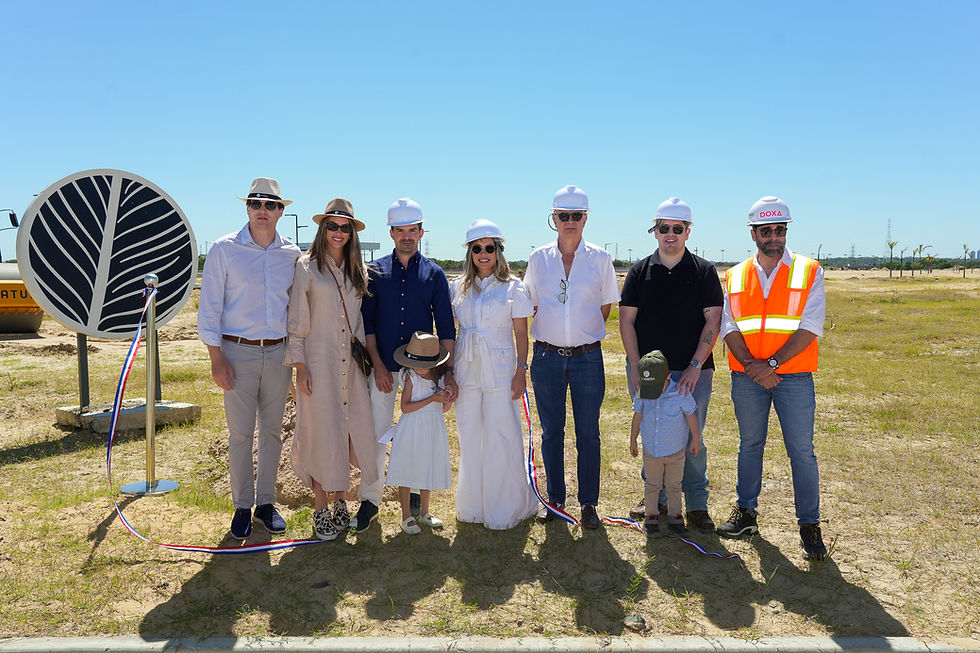Identifying Emerging Areas of Value Growth in the Real Estate Market
- Carlos E. Gimenez

- Aug 8
- 11 min read
Updated: Aug 12
Determining factors and market dynamics that shape real estate appreciation in Paraguay
In real estate discourse—whether in sales presentations, press releases, or advertising campaigns—it's common to hear that certain areas "are ideal for investment" because "they will appreciate over time." While this statement may be true, the logic behind real estate appreciation is often unclear. Understanding what factors actually drive a property's value increase is key to making informed decisions and avoiding unfounded expectations.
In the Paraguayan market, appreciation of property values isn't the result of a single factor, but rather the interaction of multiple variables. From infrastructure investments to well-executed marketing strategies, regulatory changes, and the establishment of economic hubs, the value of a property is closely linked to the urban, social, and economic context in which it is located.
Investment in infrastructure

Investment in infrastructure is one of the most decisive factors in real estate appreciation, with an impact felt both in the short and long term. Its benefits can be understood in three interconnected ways: an increase in the property's intrinsic value, an improvement in its commercial appeal, and a strengthening of the urban environment in which it is located.
Projects such as highways, paved avenues, public lighting, water and sewage networks, and transportation systems reduce friction in daily life and improve the perceived quality of life. A paved and well-lit street not only improves accessibility and safety, but also expands the universe of potential buyers or tenants, which translates into greater demand and higher prices.
Infrastructure also generates a "trickle-down effect": when an area receives new road connections, basic services, or urban amenities—such as parks, educational centers, or healthcare facilities—not only do existing property values increase, but they also stimulate the arrival of new developments, reinforcing the area's status and creating a virtuous cycle of appreciation. Furthermore, this type of project is often perceived as a long-term investment supported by public or private policies, which reduces perceived risk and encourages faster purchasing decisions.
In the Paraguayan context, the Héroes del Chaco Bridge is a recent and compelling example. This connection between Asunción and what was formerly Chaco'i—now Nueva Asunción—completely transformed the dynamics of the area. Even before its inauguration, the mere announcement of the project drove up land prices. After its opening, lots that were worth just cents per square meter 15 years ago were quoted at over USD 20/m², consolidating a new front of urban expansion and demonstrating how infrastructure can be the most powerful trigger for appreciation.
New corporate and commercial areas
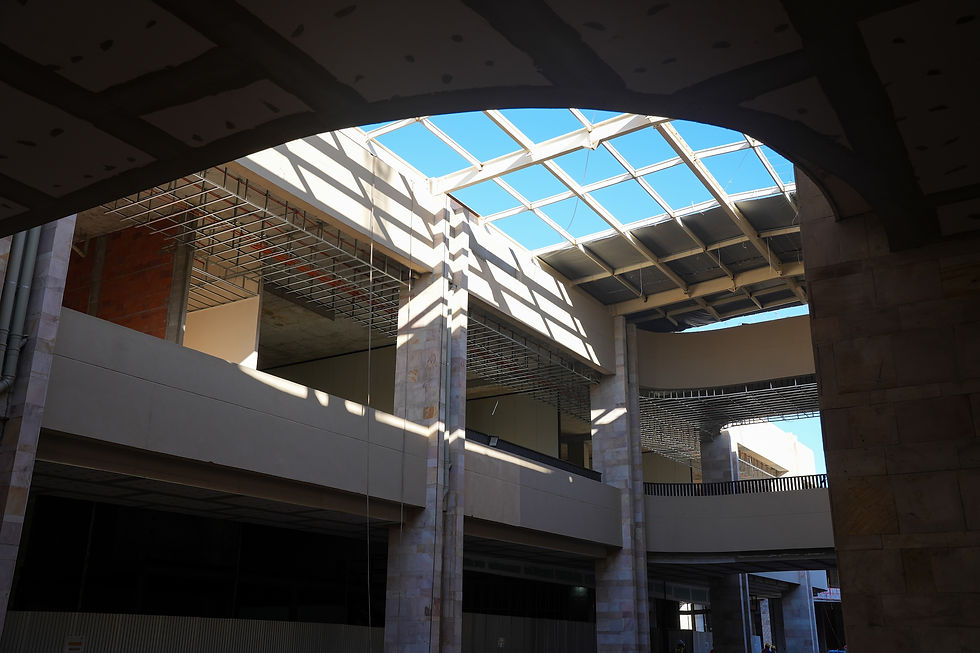
The creation of new corporate and commercial areas has a direct and profound impact on real estate valuations, as it not only changes the economic dynamics of an area but also redefines its urban identity and future prospects. The establishment of corporate hubs—whether office buildings, business parks, or innovation centers—increases demand for both commercial and residential real estate in their immediate surroundings. The concentration of companies and workers generates a constant flow of people that boosts consumption, drives the opening of businesses, and increases the need for nearby housing, resulting in sustained increases in prices and rents.
Similarly, large-scale commercial developments, such as shopping malls, food courts, or specialized service centers, function as true urban anchors. These facilities not only serve the area's residents but also attract visitors from other areas, raising the visibility and perceived value of surrounding properties. The opening of a high-end shopping center is often accompanied by new investments in hotels, offices, and higher-end residential projects, generating a multiplier effect that transforms the profile of the entire neighborhood.
In Paraguay, this phenomenon is exacerbated by a particular reality: most squares and parks are poorly maintained, and a widespread perception of insecurity limits their use, especially in the evening or at night. Poorly maintained equipment, poor lighting, and lack of regular maintenance have reduced their ability to function as natural hubs of community life.
This void has been largely filled by shopping malls. In Asunción and other cities, shopping malls are not just places for shopping, but true social gathering places where families, friends, colleagues, and tourists converge. They offer a climate-controlled, clean, well-lit, and monitored environment, providing a sense of security and comfort that open public spaces often cannot guarantee. In countries with a tradition of active public spaces, plazas and central areas fulfill this role; in Paraguay, much of that function falls to shopping malls.
The consequences for the real estate market are clear: properties located near a major shopping center—such as Paseo La Galería in Aviadores del Chaco, Shopping del Sol in the Santa Teresa area, or Mariscal López Shopping in Villa Morra—tend to appreciate in value more quickly and steadily than those located farther from these centers. Living nearby means reducing commutes, accessing a safe environment, and having a range of services—food, entertainment, banks, supermarkets, gyms, and even clinics—just minutes from home. For an investor, it means investing in an asset backed by a steady flow of people and the established reputation of the commercial hub, factors that sustain its appreciation over time.
New industries and logistics centers
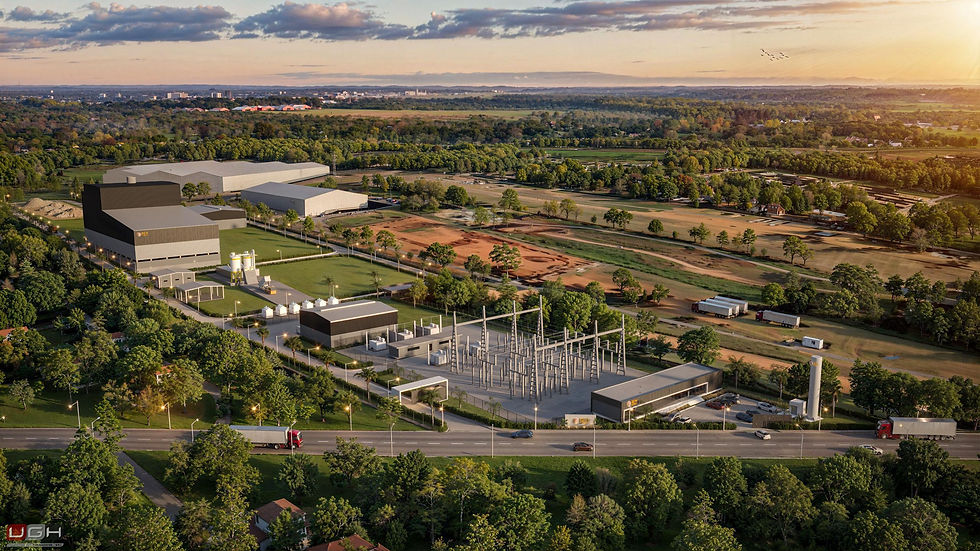
The establishment of industrial and logistics centers has a particularly strong impact on real estate valuations, although their rationale is different from that of corporate or commercial hubs. Their impact is based on job creation, the revitalization of supply chains, and the structural transformation of the region.
First, these developments cause an immediate increase in demand for land. A large-scale industrial plant or logistics center requires not only its own operational land, but also the presence of suppliers, workshops, service companies, and, in many cases, areas for future expansion. This increases the value of industrial and semi-urban land in the surrounding area and can transform previously marginal areas into strategic investment areas.
The impact extends to the residential market. When a production center is built, the need for housing for employees at all levels increases, from operators to administrative and management staff. This population influx exerts pressure on the rental market and on the sale of nearby lots or homes, boosting the appreciation of residential properties.
Added to this are the connectivity improvements that often accompany these investments: road paving, access expansion, and installation of water and electricity networks. These projects not only benefit the company or industrial park, but also enhance the value of the entire logistics corridor and increase the competitiveness of nearby properties for various uses.
In Paraguay, logistics centers and industrial parks tend to be concentrated in peri-urban areas or satellite cities, such as Limpio, Luque, Mariano Roque Alonso, or along the Route PY02 and PY01 corridors. In these areas, the arrival of meatpacking plants, e-commerce warehouses, and distribution complexes has generated a notable shift in the real estate landscape. Sectors previously considered low-density or of little interest began receiving investment in warehouses, technical offices, and auxiliary services, resulting in sustained price increases and a diversification of land uses. Land that sold for USD 15/m² a decade ago now exceeds USD 45/m² in sectors with direct connections to the modernized route.
In the medium and long term, when an industrial or logistics hub consolidates, the area's perception of economic stability is strengthened. This encourages the establishment of banks, service stations, hotels, restaurants, and businesses, transforming what was once an isolated sector into a diversified economic hub with a much more dynamic real estate market.
Catalytic megaprojects
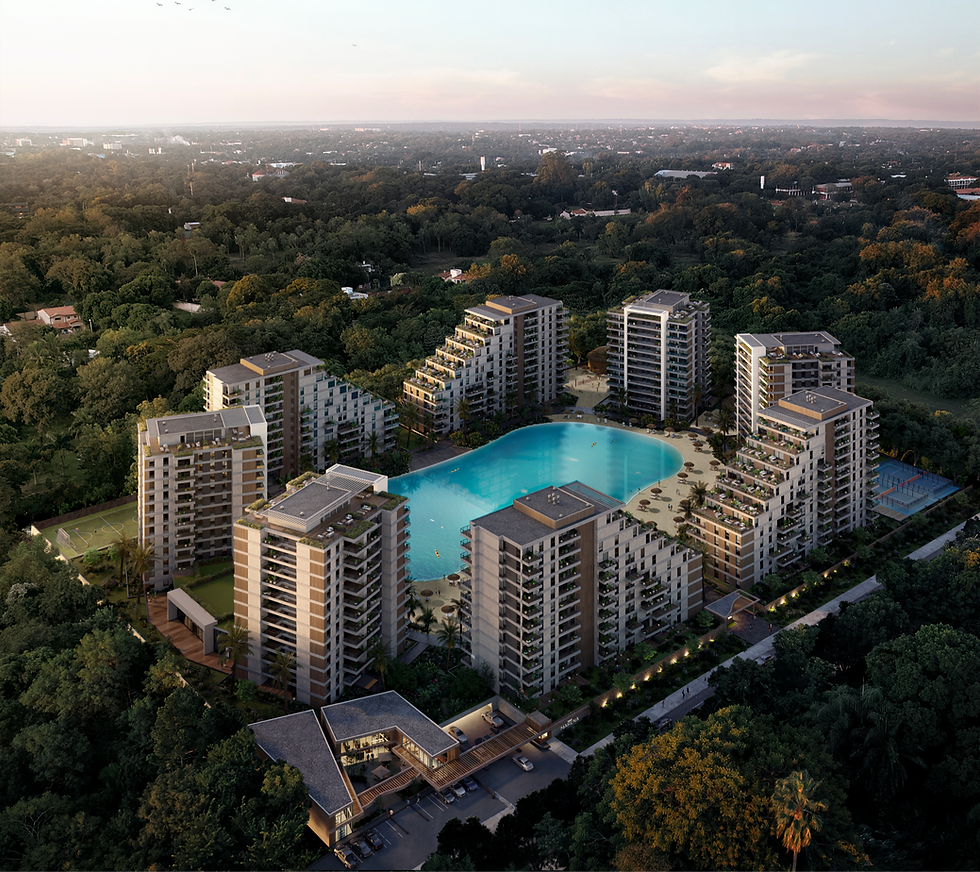
Catalytic megaprojects—whether real estate, infrastructure, mixed-use projects, or even international events—have a transformative impact on property valuation because they not only physically change the territory but also alter market perceptions and expectations on a large scale. They are called "catalytic" because they trigger processes that transcend their own physical boundaries, generating economic and urban dynamics that reshape entire areas.
The construction of a large-scale mixed-use complex, a new airport, a modern river port, a multimodal terminal, or an international stadium can completely redefine the centrality of an area, transforming it into a key hub that didn't exist before. In the short term, these projects generate immediate economic activity: employment in the construction sector, demand for inputs and services, and real estate speculation on nearby land, with prices often beginning to rise even before the project is completed.
Once operational, the scope of its impact expands. A new airport or port terminal, for example, not only improves connectivity but also attracts hotels, convention centers, business parks, and residential developments geared toward capturing the new demand from visitors or professionals. A large urban district, such as a financial hub or technology district, concentrates offices, retail, housing, entertainment, and quality public spaces, acting as a microcenter that radiates activity and increases land values within a radius that can extend for miles.
In addition to the tangible benefits, catalytic megaprojects provide an intangible but crucial element: a shift in perception. A well-designed and executed large-scale project sends a signal of confidence and long-term vision to the market, reducing perceived risk and encouraging follow-up investment.
The spillover effect is multisectoral: improving urban infrastructure, strengthening the area's identity and image, attracting events, tourism, and businesses that previously didn't have the intervention area on their radar. This virtuous cycle, if well managed, can sustain urban appreciation and repositioning for decades.
Opening of facilities of high social value
The installation of high-value social facilities—such as schools, universities, hospitals, cultural centers, and sports centers—is one of the most consistent and long-lasting drivers of real estate appreciation. These projects not only attract direct users but also transform the urban dynamics of a neighborhood, increasing its appeal and strengthening its identity.
First, they act as population attraction centers. The opening of a prestigious school attracts not only students but also families looking to live nearby to reduce commute times and ensure convenience. The same is true of universities and hospitals: in addition to students and patients, they attract teachers, doctors, researchers, and administrative staff, generating a sustained demand for housing and services in their immediate surroundings.
Their presence also enhances the perception of quality of life. Proximity to education, healthcare, or culture is a decisive factor in residential decisions, especially in middle and upper-income segments, and translates into a willingness to pay more per square meter. This makes appreciation in areas with these types of amenities more stable and less susceptible to market cycles.
In addition to this direct effect, there is an indirect impact on the local economy: the arrival of these facilities encourages the opening of shops, pharmacies, restaurants, bookstores, cafes, and transportation services, creating a more active and safe urban ecosystem. This dynamism enhances the area's reputation and consolidates its appeal to investors, developers, and residents alike.
Favorable changes in urban planning regulations
Favorable zoning regulation changes can have an immediate and profound impact on property values because they directly alter the rules of the game regarding what can be built, how the land can be used, and what activities are permitted in a given area. Simply put, zoning regulations define the "potential" of a piece of land. If the rules change to allow for greater height, greater building density, or a mixed use that was previously restricted, that land automatically becomes more valuable, even without any physical improvements.
This also applies when tax incentives are introduced, setbacks are relaxed, parking requirements are reduced, or areas are integrated into mass transit networks. In many cases, a rezoning can completely transform the profile of a neighborhood. When a previously low-density residential area is opened to high-rise or commercial development, lot values can multiply, as developers identify the opportunity to maximize the new building potential.
In Paraguay, these changes have been decisive in the transformation of strategic corridors. Areas such as Aviadores del Chaco and Molas López, which until two decades ago were dominated by single-family homes, became high-density zones thanks to the flexibility in height and use. This regulatory change paved the way for the emergence of large-scale residential towers, hotels, and corporate buildings, boosting the value per square meter and attracting large developers.
The case of Molas López is illustrative: the development of taller buildings, accompanied by investments in road infrastructure and the sewage and drainage network, led to a 30% to 50% increase in land values in less than three years, consolidating the corridor as one of the most sought-after areas for residential projects.
Favorable regulations not only stimulate the local market: they are also a magnet for foreign capital. International investors often analyze the regulatory framework in detail before deciding to purchase land, and clear, predictable, and development-oriented regulations can make the difference between an area that stagnates and one that becomes a regional investment hub.
Conversely, when regulations are tightened or significant restrictions are imposed, the effect can be the opposite: a slowdown in market dynamism and a decline in investment attractiveness. Therefore, monitoring regulatory changes is one of the key tasks for anticipating where the next waves of appreciation will occur.
Marketing by the developer

Real estate marketing, when executed strategically and sustainably, not only drives unit sales: it can redefine the urban identity of an entire neighborhood and, in doing so, catalyze its appreciation. In the Paraguayan market, there is a paradigmatic case that demonstrates this: the "New Corporate Axis of Asunción" campaign, launched in 2009 by the developer Capitalis.
At the time, the company was executing an ambitious plan to build ten corporate buildings within a five-year period, all concentrated in a specific area of the city. Beyond the physical construction, the real masterstroke lay in the narrative. Through media articles, interviews, and promotional materials, the idea was promoted that Asunción was developing a new, modern, premium office hub with international reach.
The strategy had a ripple effect: other developers, seeing the commercial potential and the power of the concept, adopted the term in their own campaigns. The market began to perceive the area not as a collection of independent projects, but as a coherent district, with a clear identity and growth potential distinct from the rest of the city.
Most significantly, this territorial branding transcended the duration of the campaign. More than a decade later, the area is still known as "Asunción's Corporate Hub," a term that has become entrenched in the collective imagination, present both in media narratives and in the communication of new projects.
This case demonstrates that embedding and consolidating a concept in the public mind can enhance the value of an area as much as an investment in physical infrastructure. When a sector achieves a recognizable identity associated with positive attributes—modernity, a concentration of services, and corporate status—the value of land and buildings tends to increase not only due to their intrinsic characteristics but also due to the strength of the built urban brand.
After analyzing all the factors that can drive a property's appreciation—infrastructure, commercial centers, industries, megaprojects, social facilities, regulatory changes, and marketing strategies—it's essential to go one step further and ask: who will actually capitalize on this additional value?
Real estate doesn't increase in price on its own. What these factors do is add attributes that improve its appeal and functionality. This new value only materializes when there is a segment of people or companies willing to pay more to access those attributes. Therefore, understanding the buyer or end user is just as important as analyzing the market in the abstract.
Each area has a different target audience and, with it, different priorities. A neighborhood enhanced by a high-end shopping center will attract those who value dining, entertainment, and security; an area incorporating a large-scale industrial park will be more attractive to workers and companies that prioritize job proximity; a district redefined by a favorable regulatory change will appeal to developers who see room to maximize land use.
In Paraguay, many of these factors are not just projections: they are already underway and, in several cases, are in the consolidation stage, with visible revaluation processes. According to the latest ECLAC estimate, the national economy will grow 4.0% this year, above the 3.6% projected in April. This active and expanding macroeconomic context favors constant revaluation in most urban and peri-urban areas, as new businesses, educational institutions, services, and facilities continue to expand.
But just as important as recognizing these drivers of appreciation is understanding buyer dynamics: where they're moving, what attributes they prioritize today, and which ones they might no longer value in the short or medium term. Demand patterns change with the economy, mobility, technology, and lifestyle. Detecting these shifts early allows you to anticipate and position assets in the locations and formats that best capture current and future value.
Ultimately, the key is not only identifying the elements that generate value, but also understanding who generates that value and how willing that audience is to pay for it. It is at this intersection—between the attributes of the area and the motivations of the target market—where value increases from a potential concept to a tangible return.
